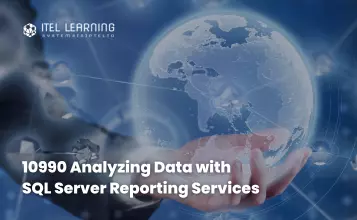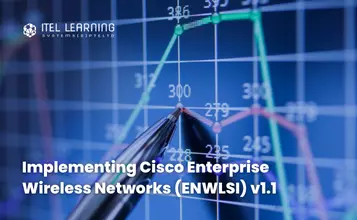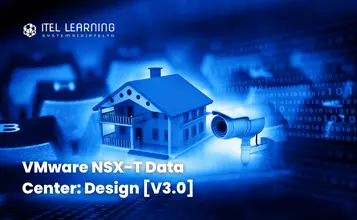Overview
The Microsoft Power Platform helps organizations optimize their operations by simplifying, automating and transforming business tasks and processes. In this course, students will learn how to build Power Apps, Automate Flows and extend the platform to complete business requirements and solve complex business problems.
Prerequisites
Candidates should have an introductory knowledge of Power Platfom
Candidates should have development experience that includes JavaScript, JSON, TypeScript, C#, HTML, .NET, Microsoft Azure, Microsoft 365, RESTful Web Services, ASP.NET, and Power BI.
Course Duration
5 Days
Course Outline
- Introduction to Dataverse
- Introduction to model-driven apps
- Model-driven apps, powered by Microsoft Dataverse
- Explore sample apps
- Introducing model-driven apps
- Components of model-driven apps
- Design model-driven apps
- Exercise
- Exercise – Control security when sharing model-driven apps
- Incorporate business process flows
- Exercise – Create a model-driven app
- Identify tables and tables types in Dataverse
- Create a custom table
- Enable attachments within a table
- Licensing requirements for each table type
- Lab – Create a new custom table and enable attachments
- Define columns in Microsoft Dataverse
- Column types in Microsoft Dataverse
- Add a column to a table
- Create a primary name column
- Restrictions that apply to columns in a table
- Create an auto numbering column
- Create an alternate key
- Exercises
- Define choice column
- Standard choices column
- Lab – Create a new choice or modify an existing choice
- Relate one or more tables – Introduction
- Relationship types that are available in Microsoft Dataverse
- Create a one-to-many relationship between tables
- Create a many-to-many relationship between tables
- Edit or delete relationships
- Exercise – Create two tables and relate them by using a one-to-many relationship
- Define business rules – Introduction
- Define the components of a business rule
- Create a business rule
- Exercise – Create a business rule
- Introduction to rollup columns
- Create a rollup column
- Introduction to calculation columns
- Create a calculation column
- Exercise – Create a rollup column
- Exercise – Create a calculation column
- Introduction to environment roles
- Understand environment roles
- Adding or disabling an environment user
- Understand security concepts in Dataverse
- Understand user security roles and security role defaults
- Exercise – Create a custom role
- Check the roles that a user belongs to
- Configure Dataverse teams for security
- Configure Dataverse group teams for security
- Introduction to Power Apps
- Power Apps building blocks
- Exercise – Create your first app in Power Apps
- Exercise – Create an app from Excel using Copilot
- Ways to build Power Apps
- Power Apps related technologies
- Additional Power Apps related technologies
- Designing a Power Apps app
- Improve apps by making basic customizations in Power Apps
- Create a navigation model for your canvas app
- Explore screens and controls in Power Apps
- Exercise – Get started with functions in Power Apps
- Exercise – Manage app versions in Power Apps
- Exercise – Share apps in Power Apps
- Exercise – Understand environments in Power Apps
- Power Apps review
- Understanding navigation
- The navigation and back function
- Lab – Create navigation functions
- More ways to use the navigation function
- Use themes to quickly change the appearance of your app
- Branding a control
- Icons
- Images
- Personalization
- Using the tablet or phone form factors
- Exercise – Create UI for a new canvas app
- Introduction to controls
- Core properties of controls
- Entering and displaying data with text controls
- Additional controls for enhancing your app’s usability
- Media
- Lab – Create a canvas app with unique controls
- Exercise – Upload file to Sharepoint document library
- Create test plans
- User interface testing
- Performance optimization
- Diagnostics and analytics
- Documentation and the customer
- Imperative versus declarative development
- The three types of variables in Power Apps
- Global variables
- Contextual variables
- Collections
- Additional variable concepts
- Exercise – Using the variables and collections
- Formulas that process multiple records
- Math operations on tables
- Combine and separate records
- The ForAll function
- Lab – Using the ForAll function in a gallery
- Sometimes you need something more than forms
- Using the Patch function to create and edit records
- Deleting record(s) from data sources and collections
- Using Patch function to update a Gallery
- The importance of thinking about performance
- Improve performance with data sources
- Testing and troubleshooting your app
- Exercise – Using the Concurrent function to test performance
- What is relational data?
- Work with relationships in Power Apps
- Exercise – Work with relational data
- Microsoft Dataverse for apps makes relationships even easier
- Delegation overview
- Functions, predicates, and data sources combine to determine delegation
- Delegation warnings, limits, and non-delegable functions
- Overview of the different data sources
- Work with action-based data sources
- Power Automate is a companion to Power Apps
- Overview of custom connectors
- Overview of the custom connector lifecycle
- Use postman for your custom connector
- Introducing Power Automate
- Exercise – Create your first flow
- Exercise – Create recurring flows
- Exercise – Monitor incoming emails
- Exercise – Share flows
- Troubleshoot flows
- Provide solutions to real-world scenarios
- Exercise – Build an approval request
- Exercise – Learn to build a flow that runs at recurring time intervals
- Exercise – Create a business process flow
- Exercise – Create a business process flow that has conditions
- Introduction to expressions
- Get started with expressions
- Notes make things easier
- Types of functions
- Write complex expressions
- Exercise – Creating a manual flow and using expressions
- Introduction to Microsoft Power Platform for Developers
- Overview of Microsoft Dataverse and the Common Data Model
- Extending Power Platform with Azure
- Power Platform environments
- Exercise – Prepare development environment
- Introduction to developer Microsoft Power Platform tooling
- Exercise – Install and use developer tools
- Solutions overview
- Deploy apps with Package Deployer
- Exercise – Use the Power Apps CLI
- User experience extensibility
- Dataverse extensibility
- Exercise – Create a Custom API
- Determine when to configure or when to code
- Introduction to developing with Microsoft Dataverse
- Microsoft Dataverse extensibility model
- Event framework
- Plug-ins usage scenarios
- Plug-in execution context
- Exercise – Write your first plug-in
- Introduction to client-side scripting
- Upload scripts
- Event handlers
- Context objects
- Client scripting common tasks
- Exercise – Use client script to hide a form section
- Introduction to conducting global operations with the client API Xrm object
- Client scripting best practices
- Debugging client script
- Exercise – Use table data from client script
- Introduction to Power Apps component framework
- Power Apps component framework architecture
- Power Apps component tooling
- Component manifest
- Demo of Power Apps code component
- Introduction to creating a code component
- Create a code component solution package
- Test and debug code components
- Introduction to using React within a Power Apps component
- Use the formatting API in a Power Apps component
- Use the Microsoft Dataverse web API in a Power Apps component
- Write a pop-up Power Apps component
- Introduction to using React within a Power Apps component
- Introduction to the Microsoft Dataverse Web API
- Authenticate against Microsoft Dataverse by using OAuth
- Interact with Microsoft Dataverse Web API by using Postman
- Use OData to query data
- Use FetchXML to query data
- Call Power Automate actions from the Web API
- Use the Web API to impersonate another user
- Track entity data changes with change tracking and the Web API
- Microsoft Dataverse Azure Solutions overview
- Expose Microsoft Dataverse data to Azure Service Bus
- Write a Service Bus Event Listener that consumes Microsoft Dataverse messages
- Publish Microsoft Dataverse events with webhooks
- Write an Azure Function that processes Microsoft Dataverse events








